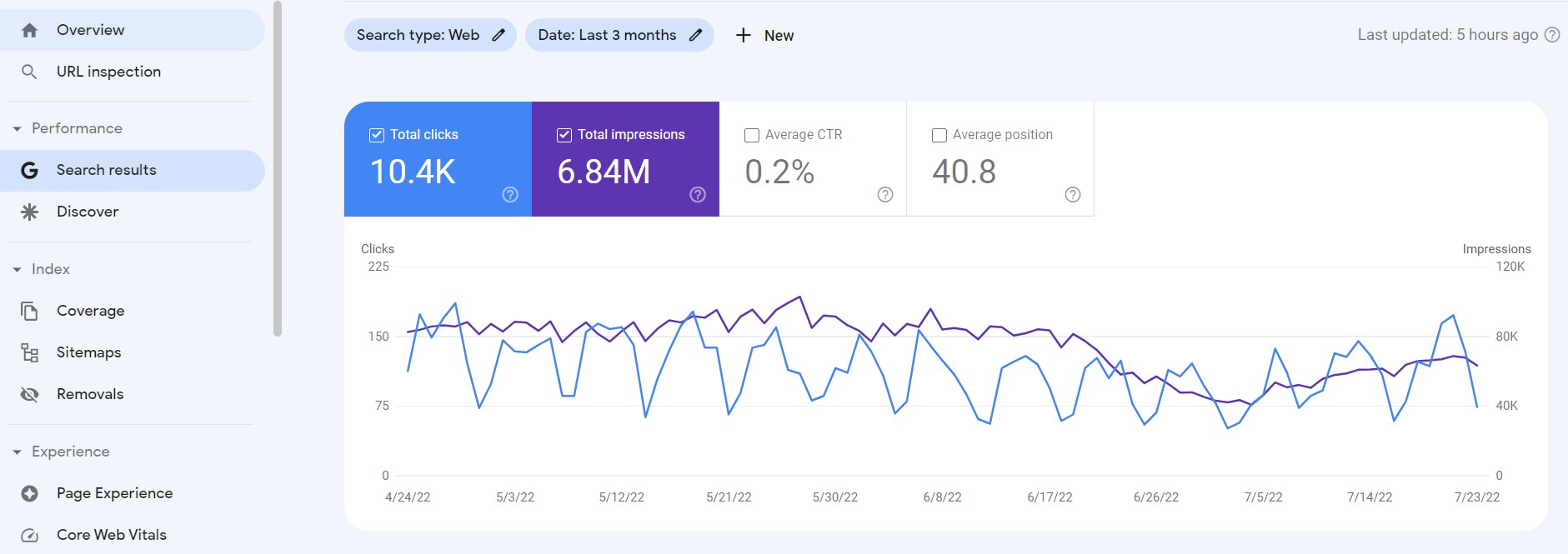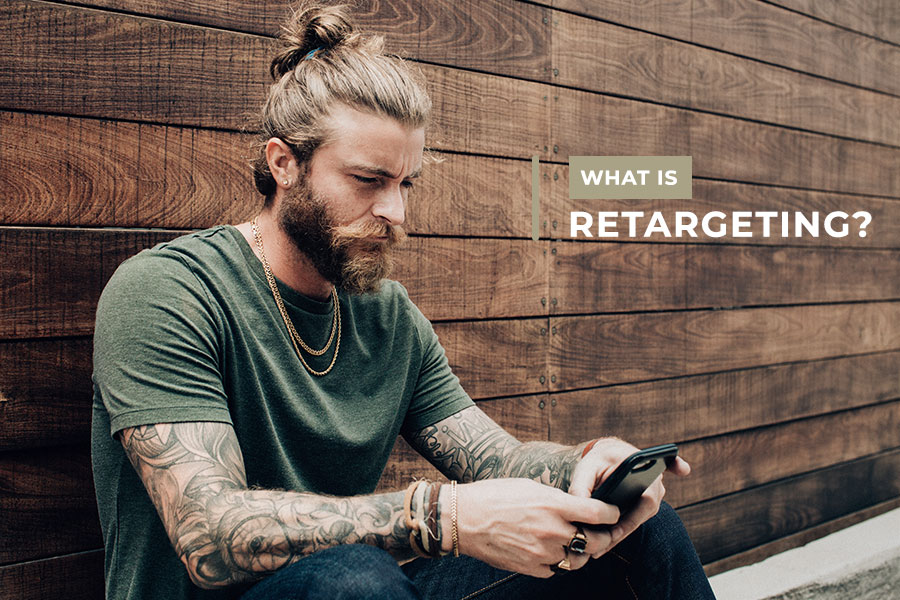What is Retargeting?
Retargeting is a strategy that can help boost your business by enabling you to track and target your audience across multiple channels, from social media to relevant ads and beyond. With retargeting campaigns, you can serve retargeting ads to your users that are highly relevant to them, including products they’ve browsed or searched for in the past on your site, products they’ve looked at on other websites, or people who have left items in their shopping carts without buying anything.
With retargeting and remarketing, you can appeal to your potential customers at the moment when they are likely to be most receptive, whether they’re browsing Facebook, reading an article, or watching YouTube videos. It’s an excellent way to increase engagement and conversion rates on your site, app, and email campaigns.
However, how does retargeting work? What should you expect in your facebook retargeting campaign? This article will show exactly how retargeting works and how you can use remarketing campaigns with personalized ads to grow your business. So, if you need help with retargeting vs. remarketing to boost your online business, keep reading!
Overview of Retargeting
Have you ever noticed how, after visiting a specific website, you start seeing a display ad for that site everywhere you browse? Those are retargeting campaigns and powerful marketing tools that can help boost your business. Here’s what you need to know about retargeting campaigns and how to use relevant ads to your advantage in your ad network.
-
Dynamic Targeting
Dynamic retargeting ads take things a step further by showing ads featuring specific products or services to website visitors. And the reason dynamic retargeting works effectively on awareness campaigns.
-
Behavioral Targeting
The most common form of retargeting in marketing campaigns is behavioral targeting. Behavioral targeting recognizes users’ actions on a particular website or app, such as browsing products or completing an online purchase.
If they show any interest in the items offered on that site or app, they will be targeted with ads from the same company on other sites they visit to generate leads. These are known as reminders or re-engagements that re engage customers.
Retargeting campaigns are reminders designed to draw attention back to something someone had already shown interest in before; re-engagements are there to get people who left without making a purchase back into the fold by reminding them of all the reasons why they should buy now instead of later.
An effective reminder advert might have a special offer attached or highlight the savings customers would enjoy if they bought this product today rather than tomorrow. A re-engagement ad copy could also highlight new features that have been added since their last visit, along with testimonials from happy customers who have already taken advantage of these features. One thing worth noting is that not everyone sees retargeted ads simultaneously. An ad network allows the visitor to see it when relevant to their interests, so even though one person may see an ad right away, another person won’t see the ad until a few days later when their interests change.
-
Standard Retargeting
The other is standard retargeting, which shows your ads to people who have visited your site or mobile app, even if it’s their first visit.
You can use standard retargeting to show your ad to people who: have visited your website, have abandoned their shopping cart, have signed up for a free trial but haven’t converted to paying customers, or have engaged with your brand on social media channels, but haven’t made a purchase.
You can set this ad campaign up on a retargeting platform using ad platforms such as Google Adwords, Facebook Ads, or an ad management system like Hootsuite or AdStage. Cost per click (CPC) or ad spend is determined by how much you are willing to pay each time someone clicks on one of your ads, while cost per thousand impressions (CPM) is based on how many times someone sees one of your ads in their feed without clicking it.

What is Retargeting Campaign?
A retargeting campaign is a form of online cost effective advertising that targets users who have already visited your website or interacted with your brand on a particular product page. There are several different types of retargeting campaigns, each with its own benefits.
Why do Retargeting Campaigns?
Because retargeting is an effective way to reach people who have already shown an interest in your product or service. By targeting your serving ads from the ad network to these individuals, you can increase their online presence and chances of taking the desired action. One type of retargeting strategy, remarketing campaigns on social media networks, allows you to target Facebook users who visited your website or Facebook page and didn’t complete a purchase. It’s great to use facebook retargeting because it converts visitors into customers for the success of your remarketing campaign.
What is a Retargeting Ad?
A retargeting ad is an online advertising tool that allows businesses to keep their brand in front of bounced traffic after they leave a website. By targeting ads to users who have already shown interest in what you’re selling, you can increase the chances that they’ll come back and convert.
Why do you Need Retargeting Ads?
If you’re not using retargeting ads as part of your digital marketing strategy, you’re missing out on a valuable opportunity to reach your target audience. Retargeting ads are highly effective because they allow you to specifically target people who have already shown an interest in your product or service.
Types of Retargeting Strategies
Retargeting can be one of the most effective tools to drive traffic to your site and turn visitors into buyers. Still, it can also be confusing when you don’t know the different types of retargeting strategies.
There are five types of retargeting strategies: pixel-based, list-based, search-based, social media-based, and onsite-based. But right now, the most popular form of retargeting for businesses is onsite-based.
-
Pixel-Based Retargeting
This type of retargeting is common. When using this strategy allows you to display ads to all users after leaving your website. This is regardless of whether these users left their personal data or not.
However, to use pixel-based retargeting on your website, you should add a snippet of JavaScript code to all your website pages. That will help create retargeting pixels and add a cookie to their browsers after visiting any of your pages.
The approach can either be cookie-based or cookieless. Some innovative systems will use cookieless retargeting techniques depending on the user’s digital fingerprinting. That will allow the system to track online activities and then send the information to advertising networks that have agreements on showing ads to other sites they visit.
It is connected to your site traffic directly, which means with no traffic, you can’t display with no traffic ads. So, when you don’t have traffic, you’ll not have anyone to target.
-
List-Based Retargeting
These remarketing lists are email-based retargeting that relies on gathering contact information from customers during the shopping process to market directly to them via email. It can be used as an extension of a physical store’s marketing campaign when clients enter the store but don’t buy anything.
It involves sending remarketing lists of emails to people who have visited your website or interacted with your brand somehow, which means you need an extensive list of emails to be effective. The goal is to remind users visit of your existence and encourage them to return and engage with your brand again.
If they open the email, it’s a sign that they were interested in what you had to say and likely gave them the green light to go ahead and click on the links for more information about your products or services. A variation of this strategy is known as ‘lookalike audiences,’ which targets potential customers similar to those already converted.
In this case, you identify common retargeting list attributes such as demographics (age, gender), geography (location), interests (examples include running, golf), and other preferences (types of food consumed). While these two retargeting list strategies are not identical, they do serve the same purpose by increasing awareness among individuals who might be interested in your product or service.
-
Search-Based Retargeting
Search-based retargeting occurs when you show an ad for your product or service to someone after they search for keywords related to what you offer. With this type of retargeting, it’s essential to identify what keywords will be relevant and which ones will be less valuable so that you don’t end up wasting advertising dollars.
This is a great way to reach people who are already interested in your offer. These users have done the work for you by searching for it. And it only shows ads to those who have previously searched for specific phrases or keywords.
-
Social Media-Based Retargeting
By installing a pixel on your website, you can track when someone visits your site – first visit – and then target them with ads on social media. This is a great way to keep your brand top-of-mind and increase the chances of returning to your site.
The strategy focuses on displaying ads like Facebook retargeting campaigns to those who visited your site or interacted through comments, shares, or likes on their social media platforms. Some of the commonly used social retargeting options include:
- Facebook;
- Twitter;
- Instagram;
- Pinterest;
- Snapchat;
- LinkedIn.
-
Onsite-Based Retargeting
If you want to retarget website visitors, the onsite-based retargeting ad is the way to go. This type of retargeting ad entails adding a piece of code to your website that will place a cookie on the past visitors browsers. This vital tool will then enable you to show ads to that person who will visit your site or when they browse other sites on the web.
Onsite-based retargeting is effective because it allows you to keep your brand top-of-mind for people who are already interested in your offer. For example, suppose you had an electronic store and set up an onsite-based retargeting campaign where someone visits your site and doesn’t purchase anything from there but visits other websites afterward. In that case, you can still show them advertisements for items from your store even though they didn’t buy anything.
Another great thing about this strategy is that it’s effortless to set up. You can install onsite-based retargeting without coding knowledge with the right tools, like Google Analytics. After creating a user ID for your business and installing the proper tags, you can create an audience based on specific pages or links within your site.
These audiences allow you to target visitors of these pages or links by demographics (gender, age range) or page events (which page they visited). This information will give advertisers a more detailed idea of their potential customers while providing more targeted ads. Plus, once visitors leave your site without taking action (browsing products or clicking on offers), chances are that they’re not interested in purchasing something from you.
But onsite-based retargeting could convert those lost prospects into sales by reminding them with targeted messaging.

How Effective is Retargeting?
Retargeting is a powerful marketing tool that can help you boost your business. By showing search ads to people who have already visited your site or interacted with your brand, you can remind them of your products or services and persuade them to come back.
Additionally, retargeting can help you reach new target audiences by showing your ads to people who are similar to your existing customers. A study found that for every dollar spent on retargeting, marketers get an average return of $2.60 in additional sales and improve their brand awareness.

How Retargeting Works
It’s simple: you create an ad campaign with one or more targeting criteria — like keywords and interests — then display your ads across the web based on those targets.
Retargeting doesn’t cost much upfront but has a big payoff because it saves money on advertising on other channels (like TV) where your potential buyers might not be watching at all. Google AdWords estimates that paid search clicks increased 47% after implementing retargeting.
And if you’re still unsure about this strategy, Facebook found that ads featuring custom audiences had a 12% higher click-through rate than the same ad without a custom audience. So what are you waiting for? Go take advantage of this powerful tool today.
When you visit a website, the site drops an anonymous browser cookie on your browser. This cookie contains a unique identifier that allows businesses to recognize your browser when you visit other sites. When you see an ad for your visited site, it’s called retargeting. For example, if you looked at shoes and then saw ads for shoes later on Facebook or Twitter, those are retargeted ads.
The logic behind this is simple: If someone has shown interest in your product before, they are more likely to purchase it again later. And while retargeting doesn’t guarantee sales (nothing does), there is evidence showing that this technique can boost conversion rates.
Why Should You Use Retargeting?
Retargeting for serious marketers keeps your brand in front of bounced traffic after visitors leave your website. It’s a cookie-based technology that uses simple code to follow your audience as they travel across the web and deliver your ads accordingly.
In other words, retargeting is a way to bring people back who have already shown an interest in what you’re selling — and keep your name top of mind as they continue their journey down the purchase funnel.
Here are reasons why you should create retargeting ads as part of your digital marketing strategy:
- Retargeting is highly effective.
- Your customers will be happier because they won’t see irrelevant or repetitive ads.
- It can help improve clickthrough rates on ads, which ultimately helps drive more conversions for your business (more sales).
- You can measure how much each campaign costs per lead or sale, which allows you to scale back or expand based on the data.
- With retargeting, customers know where to find you if they want to buy from you again later on (like when they want another electronic).
- Retargeting lets shoppers browse without feeling like someone is always watching them.
Tips Before Picking Retargeting
-
Consider the Frequency
How often do you want to show these serve ads? Set your goals and adjust accordingly to conversion campaigns.
-
Make Sure You’re Capturing Quality Leads
A person has only one chance at making a first impression, so make sure your landing page offers something valuable before asking for personal information. Put yourself in their shoes and ask yourself, would this page convince me to sign up?
-
Go mobile
More than 50% of internet users access the internet exclusively through mobile devices. So make sure that any ad campaigns include mobile platforms.
Best Practices for Utilizing Retargeting Strategy
-
Define Your Audience
This is the first and most important step in creating a retargeting campaign that will actually work. Who are you trying to reach with native ads?
-
Research Which Platforms Offer Retargeting Services.
Google and Facebook are two of the most popular, but you can also use the others.
-
Set a Budget for Your Campaign
This will help you determine how many people you can reach and for how long.
-
Create Compelling Ads
The ads you create should be relevant to your target audience and offer something that they would be interested in.
-
Test Different Versions of Your Ads
Try out different images, headlines, and call-to-actions to see what works best with your audience. One thing to keep in mind is that testing too many options at once may result in getting more information than necessary, and it could take longer than expected to figure out what’s working and what isn’t.
Start by focusing on one element at a time and then test other elements individually. Once you’ve found what works, duplicate the successful ad for all variations to maximize the impact of your marketing efforts.
-
Monitor Your Progress Over Time
It’s not enough to just post an ad set once or twice and expect results to come pouring in. Keep tracking pixels of impressions, clicks, conversions, cost per conversion and cost per click (CPC) with a tracking code so you can measure how well your campaign is doing over time and make adjustments if needed.
Ultimately, the key to any successful retargeting campaign is being able to identify who your customers are and using those insights to create effective ads. For example, let’s say you’re running a holiday retail business. You might want to focus on attracting customers based on gender and age demographics since this is when people are shopping for gifts, to focus on specific ads.
Wrapping Up
Retargeting strategy is a powerful marketers today technique because it reaches out to the vast majority who have already expressed interest in what you’re selling. With any luck, they’ll be persuaded to take the next step and make a purchase. That’s why retargeting is one of the most effective online marketing strategies, targeting existing customers based on previously visited behavior, not just demographics like age and gender.
Using retargeting, most marketers won’t waste money advertising to someone who isn’t interested in your product. It also gives companies another way to get their message across because many people pay attention only to the first ad that is relevant to them. But keep in mind: Retargeting only works if the campaign is properly set up and the timing is right.
